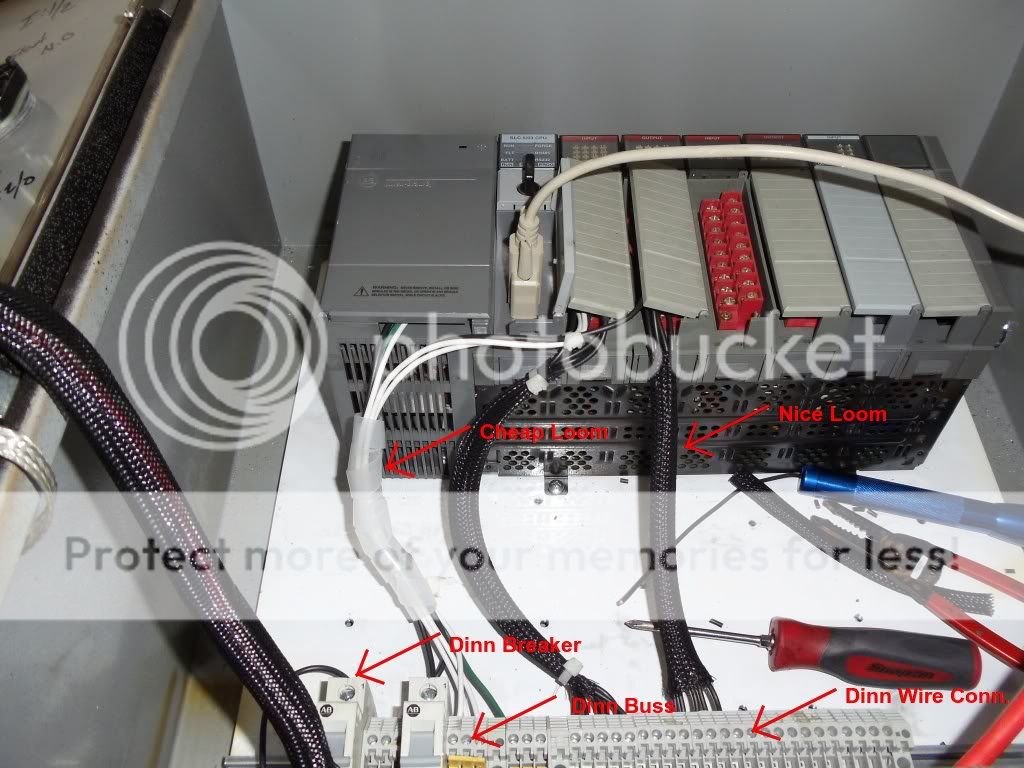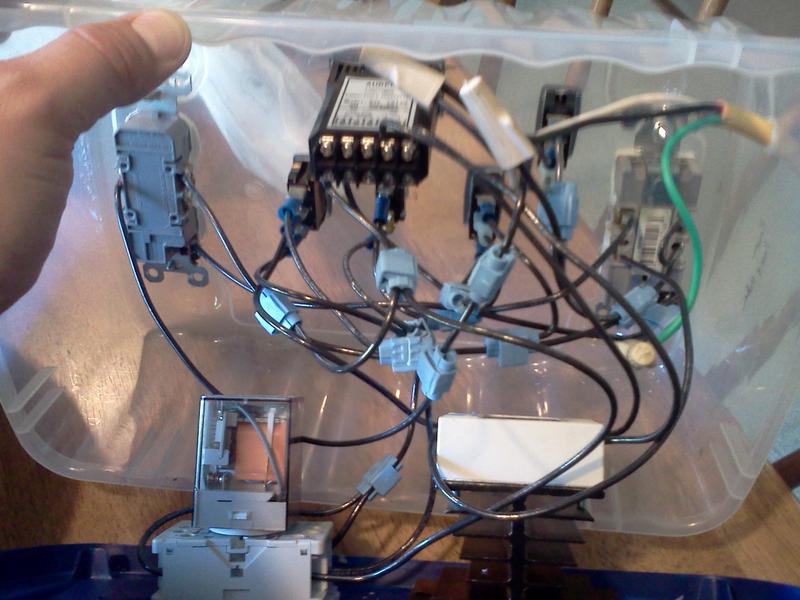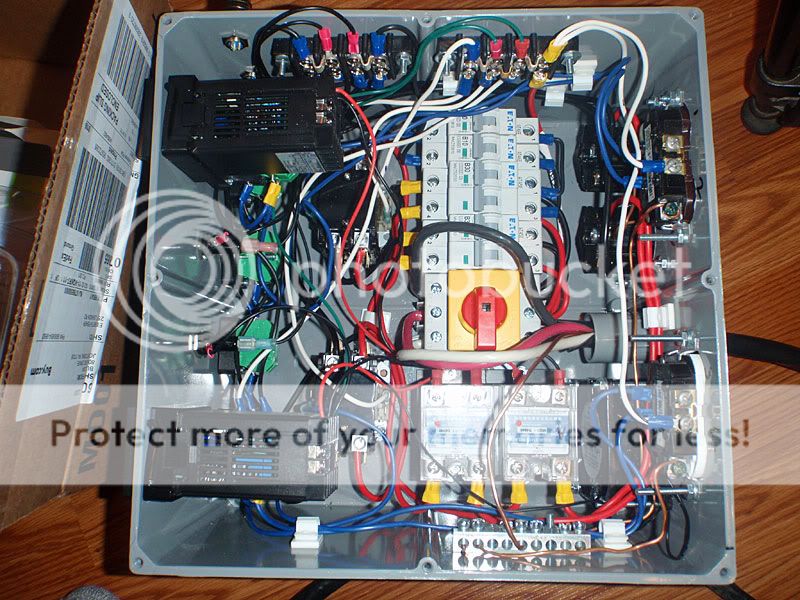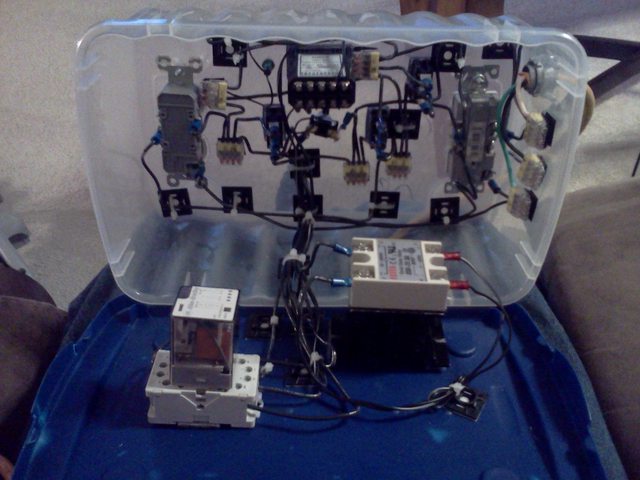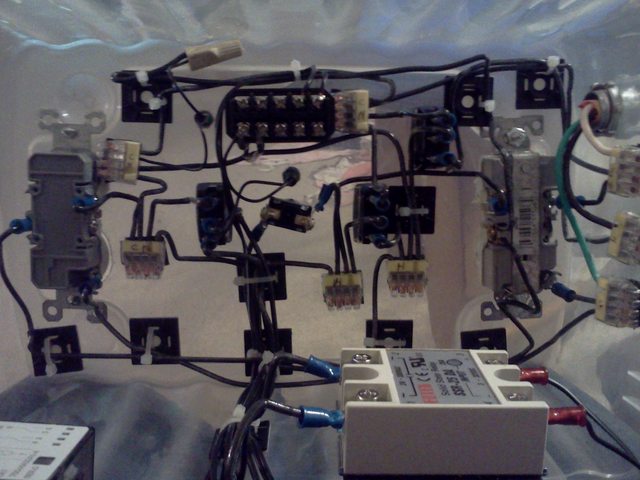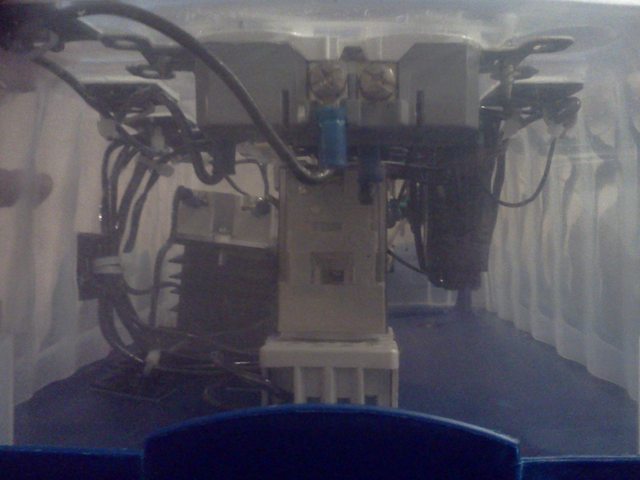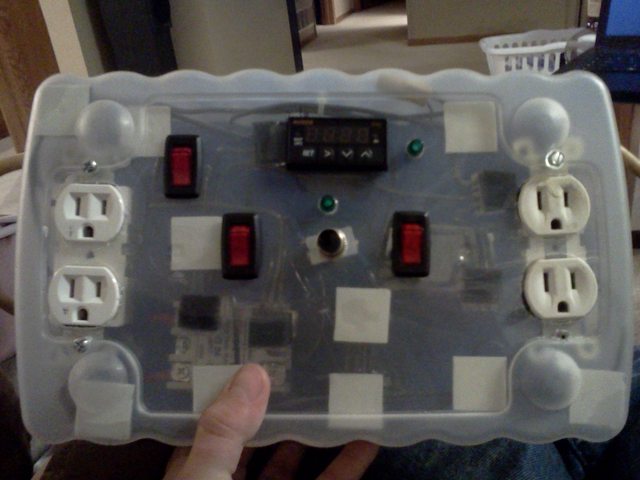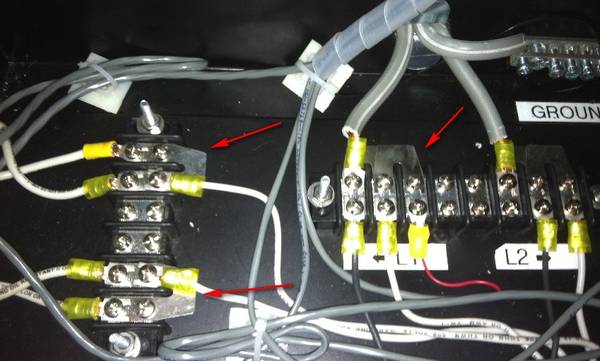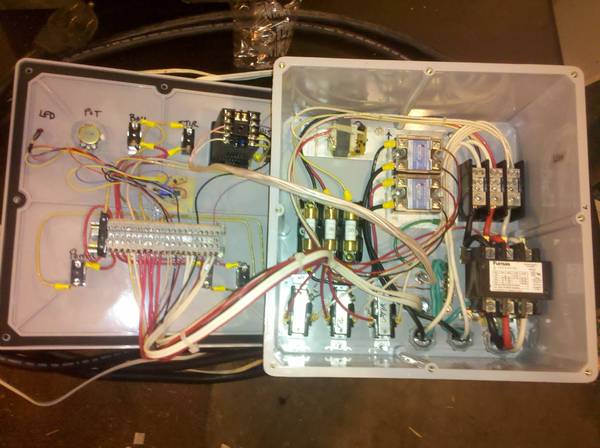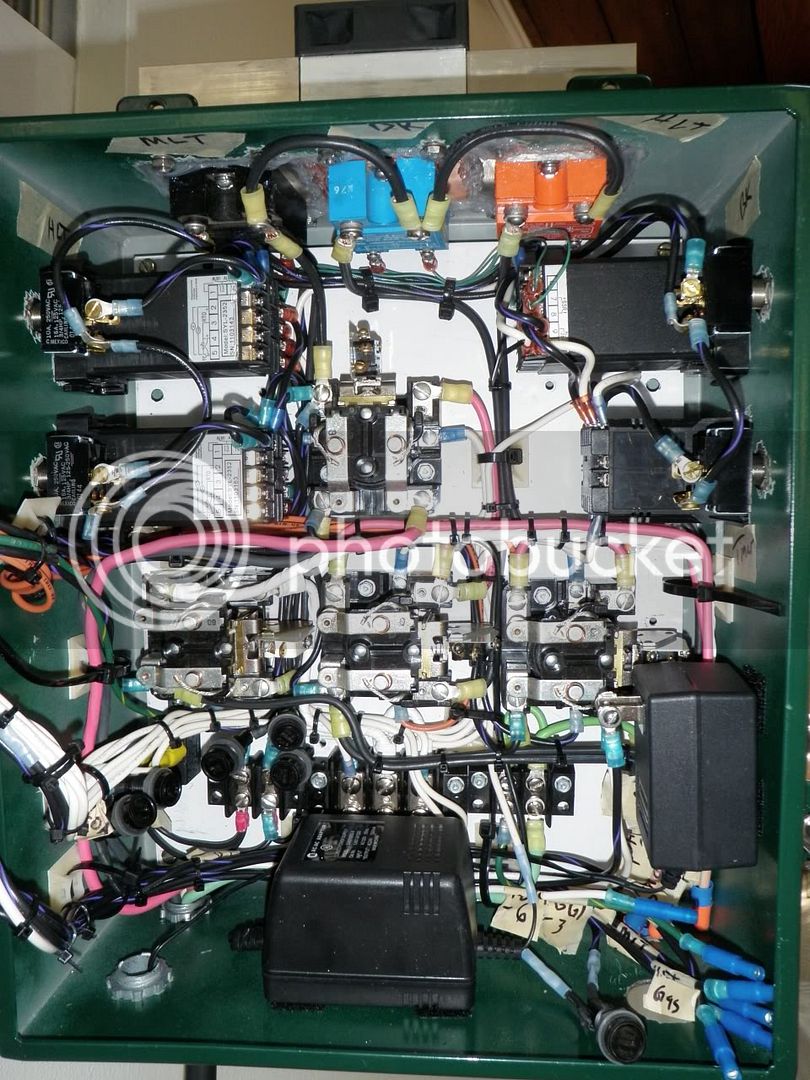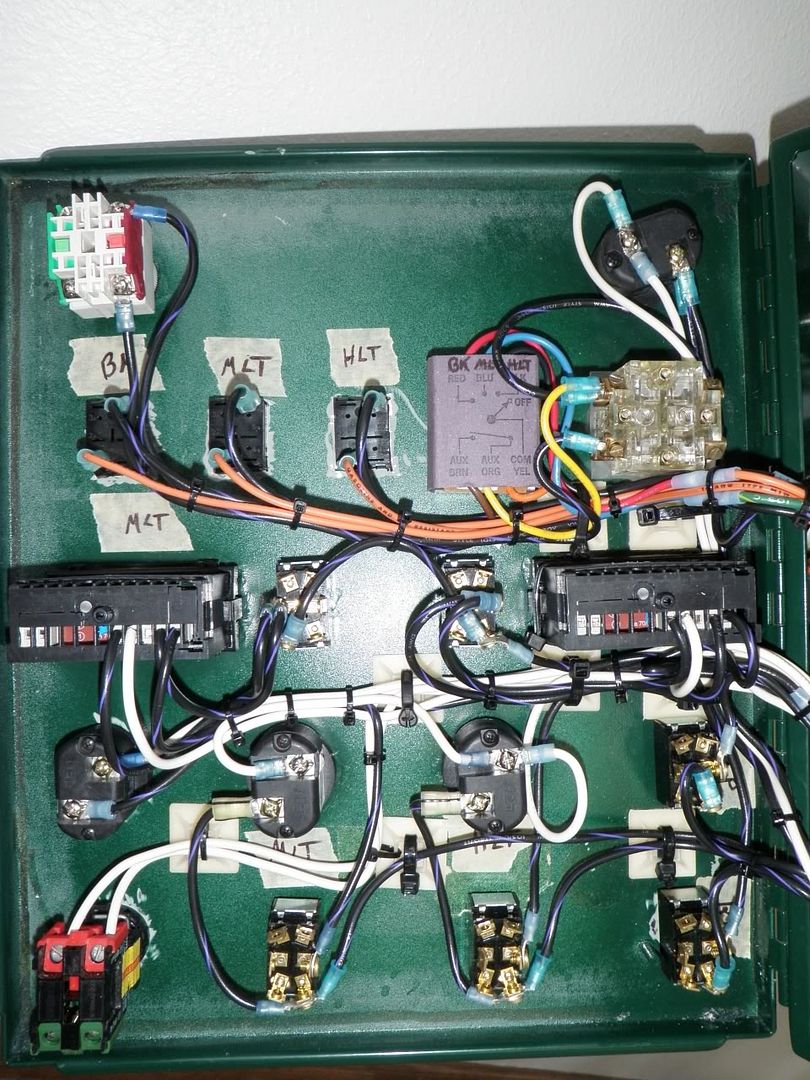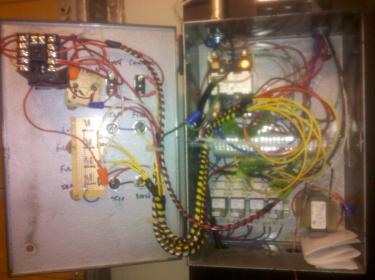shortyjacobs
Well-Known Member
So I wired up my control box yesterday for my RIMS/Pump setup. I used a ton of Scotchlock connectors:
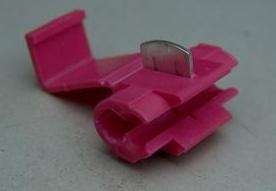
BOY is it ugly! Strained wires, a big rats nest of crap. With so many connections being strained when I close it up, it can't really be safe. I know sooner or later a wire will slip off a terminal and short the damn thing out.
SO, how do I do this correctly? Here's my schematic:
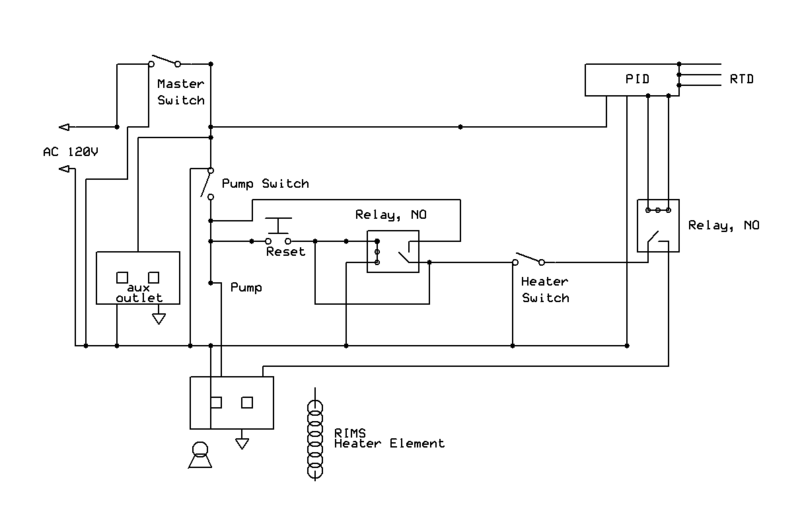
(Note: each switch has a neutral lead because they are illuminated)
I am thinking perhaps a terminal strip for all the common connections, and a few more strips for the hot side junctions?
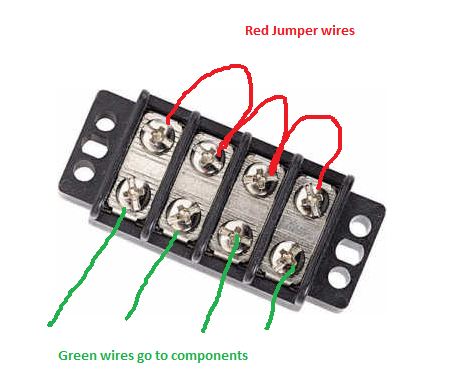
Thanks!
(Post script, at least it all worked when I put it together...after I figured out that I had hot/neutral reversed, (seriously, WHY is black hot? WHITE should be hot!), and I only got shocked ONCE! (note to self, even if you turn off the master power switch, don't open it up until you unplug the damn thing!))

BOY is it ugly! Strained wires, a big rats nest of crap. With so many connections being strained when I close it up, it can't really be safe. I know sooner or later a wire will slip off a terminal and short the damn thing out.
SO, how do I do this correctly? Here's my schematic:

(Note: each switch has a neutral lead because they are illuminated)
I am thinking perhaps a terminal strip for all the common connections, and a few more strips for the hot side junctions?
- How do you wire those up for junctions, like this?

- Is there a better way to do junctions?
- Are there any tips or tricks to routing wiring so that it isn't one big rats nest?
Thanks!

(Post script, at least it all worked when I put it together...after I figured out that I had hot/neutral reversed, (seriously, WHY is black hot? WHITE should be hot!), and I only got shocked ONCE! (note to self, even if you turn off the master power switch, don't open it up until you unplug the damn thing!))


